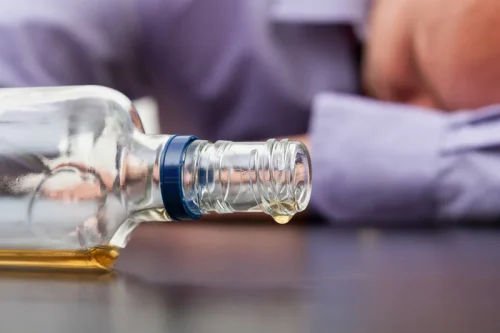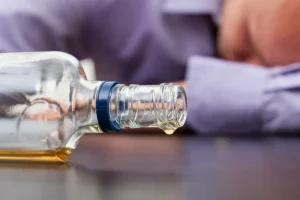
The phrase “cravings” is used to refer to the feeling someone has when they wish to use again. However, if you have a solid plan to confront such cravings, a relapse won’t be on the radar. According to the NIAA, approximately 35.9% of alcoholics will attain lasting sobriety. That translates into the reality that 65% will ultimately relapse, and likely within the first year of sobriety. There is a reality to be addressed here, and that is that many people relapse with a beautifully constructed plan that they never used or put into action. Know who you will call first, what you will ask of them, and if you will attend a meeting or return to a rehab facility.

Lists by Topic

You can practice deep breathing anywhere, anytime, and it can be an effective tool in long-term relapse prevention. It’s important to set boundaries, practice empathy, and be supportive of others in your network. Healthy relationships can provide a stable foundation for your recovery. When your plan relapse prevention plan is complete, give your support system a copy of the document. For example, if they notice you’re staying out late every night and avoiding the rules you set about sleep, a gentle reminder could help you get back on track. Start with your list of identified triggers, and move through them one by one.
How to Involve Your Support System

Consistent routines are not just good for those who struggle with addictions but also beneficial to people who want structure in their daily life. Routines provide a sense of stability and certainty that helps individuals stay on track towards their goals. In the context of relapse prevention, establishing consistent routines is essential to help your loved one maintain sobriety.
- No matter what you do, there will always be someconsequences of addiction that cannot be avoided.
- Others may feel so confident in their ability to stay sober that they avoid preparing for setbacks or challenges.
- By informing your friends, family, or sponsor about what to look for, they can help you stay on track and provide intervention when necessary.
- It involves establishing a safe space where the person in recovery can be heard and understood, without judgment or criticism.
Reach Out to a Support Group
- Relapse doesn’t happen overnight; it usually begins with subtle changes in thoughts, emotions, and behaviors.
- When you realize allthe things you have to be thankful for, it is hard to remain sad.
- A well-crafted relapse prevention plan is a vital tool in maintaining sobriety.
- Think about what you could do instead of use, and how such activities would point you back on the right track.
- Relapse prevention planning helps maintain long-term recovery by identifying potential triggers and creating actionable responses.
- Our comprehensive guide outlines relapse prevention planning’s key components and practical steps for creating and implementing an effective plan.
- Before communicating with others, take time to understand your own needs and boundaries.
It plays a very important role in recovery by providing a structured framework to navigate the challenges that can lead to relapse. As our loved one begins their journey towards sobriety, we may feel relieved that they have a relapse prevention plan in place. However, it is not enough to simply have a plan, it is equally important to ensure that it is effective in supporting them. In this section, we will take a closer look at how we can evaluate the effectiveness of the plan through regularly monitoring progress and identifying areas for improvement. We’ll explore the benefits of being open to and making necessary adjustments to the plan, and the importance of celebrating every success, big and small along the way.
What’s Included in a Relapse Prevention Plan
- Try to brainstorm a list of scenarios that could lead to potential relapse and list the warning signs of relapse.
- To prevent a relapse, you will want to remove triggers, including places, people, or purchases that may bring about urges to use again.
- Your plan should also include a variety of tools and resources that you can rely on to stay on track with your recovery.
- We may be paid a fee for marketing or advertising by organizations that can assist with treating people with substance use disorders.
- Use the worksheets and templates provided to create a solid foundation for your relapse prevention plan.
- Relapse prevention plans can include ways in which you hope to amend the damage addiction caused in your life.
- While the desire to get sober is easy, living sober takes commitment and time.
Ben created the video blog A String Of Hope in 2019 to share hope and positivity about addiction and recovery. Ben is personally in recovery and has been creating content for drug rehabs for over 10 years. Maintaining recovery motivation is possible through small, concerted everyday efforts. It’s often easier to break down long-term goals into more manageable chunks, such as committing to a weekly support meeting and exercising 5x weekly. A recovery journal can document your thoughts, feelings, challenges, and successes. Reviewing your journal can visualize how far you’ve come and remind you why you started this journey.
- Techniques such as deep breathing, meditation, and mindfulness help individuals manage stress and stay calm.
- An example of a trigger could be a person that you might know that you always used with – avoid this person if you are not confident in yourself to stay on your recovery path.
- Instead of drinking or using, you attend a support meeting or call a family member or close friend right away.
- Returning to drug or alcohol use after treatment for substance use disorder is a part of many people’s recovery journey.
If this is the case, you may benefit from getting help with the mental health issues that accompany your addiction. Now, let’s look at the bio-psycho-socio-spiritual elements of addiction and devise a relapse prevention plan. Completing an addiction treatment program is a significant milestone in your recovery. It typically signals a transition into a new stage of recovery–one where you may have more freedom.

Continuing Therapeutic Care
In addition to establishing a relapse prevention plan, individuals with a substance use disorder should have a treatment plan in place. Treatment could include individual therapy, group therapy, such as AA meetings, and/or psychiatry, said Gottlich. Relapse prevention plans are tailored specifically to each person depending on their circumstances. Their goal is to reduce or prevent relapse from happening, and this article provides tips and strategies for creating a relapse prevention plan. In addition, having a strong “action plan” in writing can be a great resource. The action plan should offer guidance and be a tool for accomplishing and holding fast to your goals in recovery.



